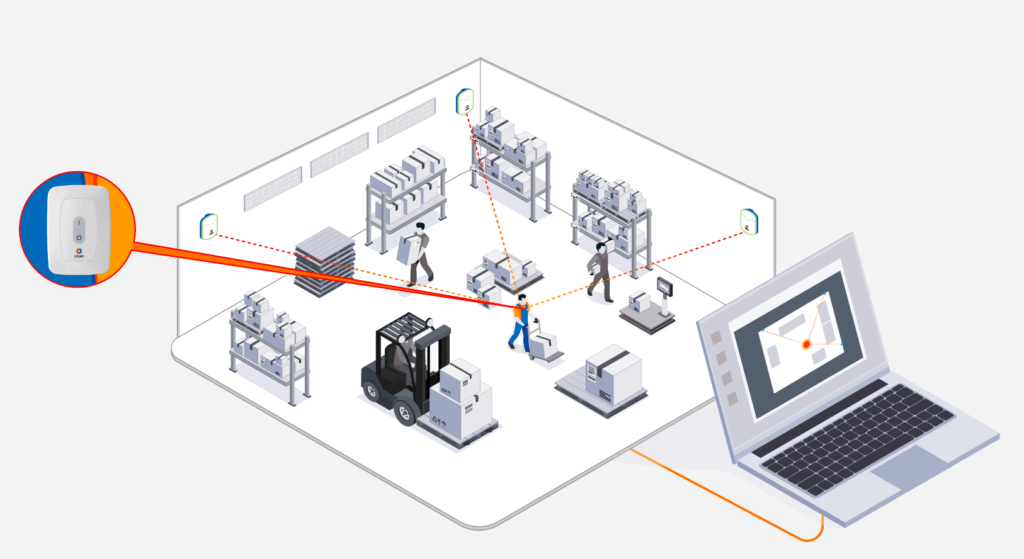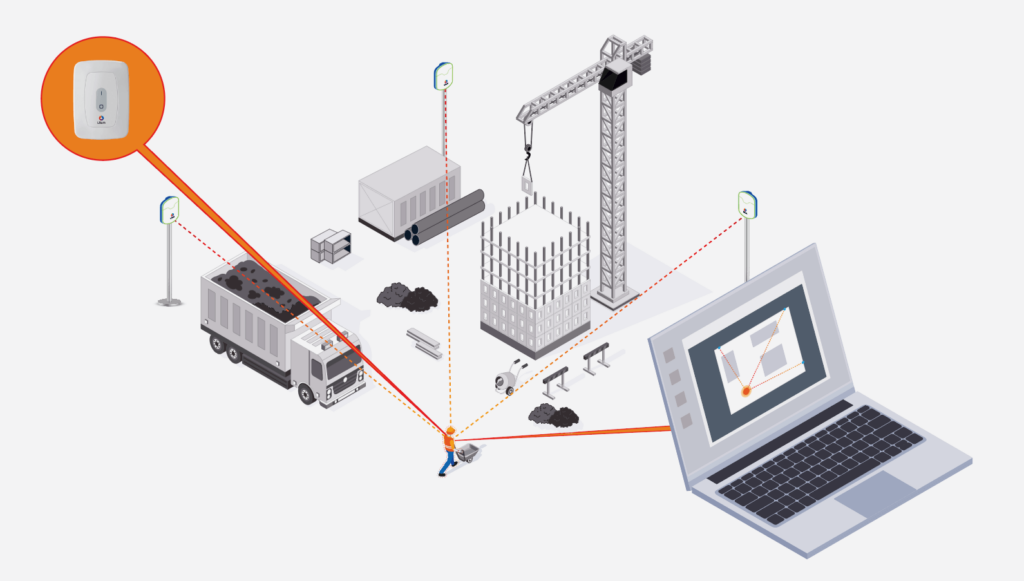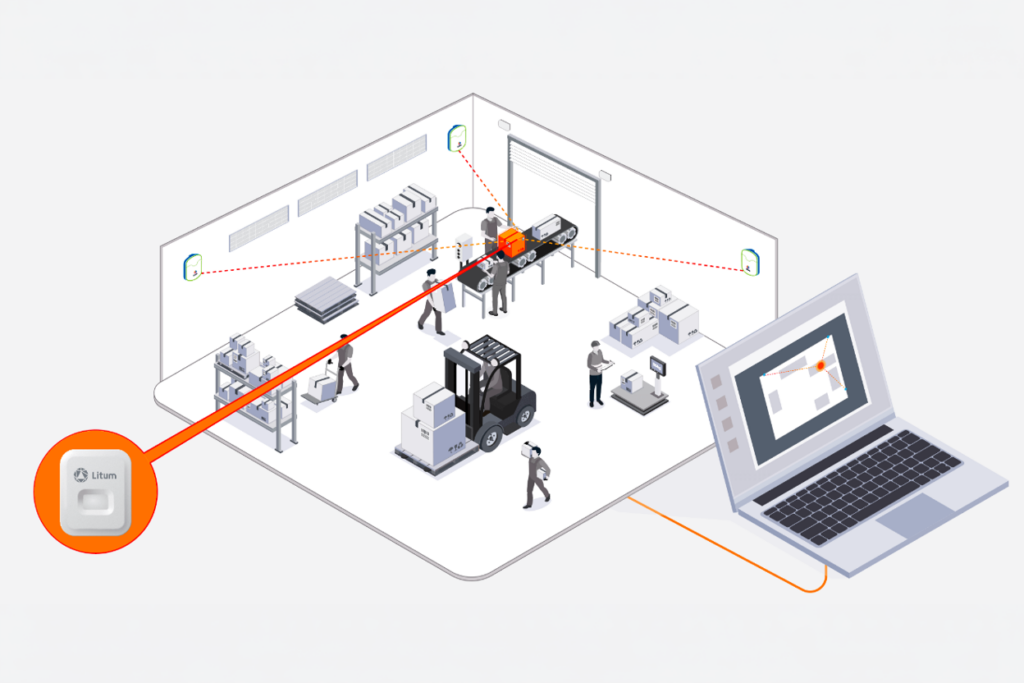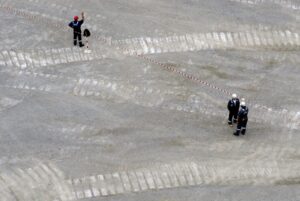As industries face growing demands for productivity, safety, and real-time insights, many are reaching a critical turning point. Manual tracking systems and disconnected workflows are no longer enough to compete in fast-moving environments. That’s why more companies are adopting Real-Time Location Systems (RTLS) as a foundation for smarter, safer, and more agile operations.
Litum’s white paper, Navigating the Industrial Frontier, explores how RTLS can help businesses in manufacturing, warehousing, logistics, oil and gas, mining, and aviation reshape the way they operate. Whether you are just learning about RTLS in industrial operations or looking to scale up an existing initiative, this guide offers valuable takeaways on how to get it right.
What Is RTLS and Why Does It Matter?
RTLS is a technology that provides real-time visibility into the location and movement of people, assets, and equipment. It is used to improve operational efficiency, enhance safety, and support data-driven decisions. RTLS systems use technologies like Ultra-Wideband (UWB), Bluetooth, Wi-Fi, and RFID to track tagged items or individuals across facilities.
What sets RTLS apart from traditional tracking tools is the speed, precision, and depth of insight it delivers. It is especially valuable in high-stakes environments where delays, blind spots, or inefficiencies can lead to serious safety issues or operational losses.
RTLS is like a GPS for your indoor world, only smarter and more precise.
Imagine your facility as a bustling city, and every asset, forklift, or worker is a moving car. GPS helps drivers navigate city streets, but it loses accuracy indoors. RTLS, on the other hand, brings that same real-time awareness inside your operations, down to the room, aisle, or workbench. Instead of satellites in the sky, RTLS uses anchors and tags like traffic cameras and smart streetlights. They continuously report each item’s exact position, not just where it is, but how it’s moving, where it’s been, and when it needs attention. Just as a smart city uses traffic data to reduce congestion and accidents, your RTLS system uses location intelligence to prevent risks, optimize routes, and keep everything running on schedule .

Benefits of RTLS in Industrial Operations
The white paper highlights a range of ways RTLS delivers measurable impact, including:
- Asset Tracking and Management
Monitor equipment, tools, and materials in real time to avoid losses, reduce search times, and extend asset life. - Worker Safety and Security
Use location data to keep workers out of hazardous areas, automate emergency alerts, detect inactivity, and support lone worker protocols. - Workflow Optimization
Identify bottlenecks, optimize routes and processes, and improve how people and machines interact within your space. - Supply Chain and Yard Management
Track goods across warehouses, yards, and gates with accurate zone-based monitoring. Improve loading/unloading efficiency and minimize delays. - Predictive Maintenance
Combine RTLS with sensor data to anticipate equipment failures and schedule maintenance before breakdowns occur. - Data-Driven Decision-Making
Generate insights from movement patterns and system interactions to inform operational improvements and business strategy.
Why UWB RTLS Stands Out
Among the various tracking technologies, Ultra-Wideband (UWB) RTLS consistently delivers the most reliable and precise results in industrial settings. When it comes to RTLS in industrial operations, the white paper outlines several key advantages of UWB:
- Centimeter-level accuracy
- Resistance to signal interference
- Ability to track thousands of assets simultaneously
- Long battery life and low power usage
- Seamless indoor and outdoor performance
For complex facilities or high-risk zones, this level of performance is critical to both safety and efficiency.
Real RTLS Use Cases from the Field
The paper also walks through real-life implementations that show how RTLS is already delivering results:
- Forklift Collision Avoidance
Reduce accidents with alerts, speed control, and proximity warnings between forklifts and pedestrians. - Automated Emergency Mustering
Eliminate manual headcounts with real-time personnel tracking and BLE-based ID badges. - Pandemic Readiness
Track close contacts, enable social distancing, and control workplace occupancy during health crises. - Construction Safety
Learn how the Grand Paris Express project used RTLS to monitor underground workers and reduce incidents on one of Europe’s largest infrastructure projects. - Process and Maintenance Tracking
See how manufacturers like Simeco/TEKA use RTLS to improve workflow visibility, reduce errors, and accelerate response to equipment needs.

Addressing RTLS Deployment Challenges
Adopting RTLS in industrial operations may seem complex, especially when integrating with existing systems or dealing with environments that have high levels of interference. Battery maintenance, hardware placement, and system scalability can also raise concerns.
Litum’s white paper does not avoid these realities. Instead, it offers guidance on how to address them:
- Conducting proper site assessments
- Selecting the right RTLS architecture
- Ensuring smooth integration with ERP and timekeeping systems
- Managing power consumption and maintenance
- Offering remote monitoring and support services
By planning carefully and choosing a proven partner, companies can overcome these barriers and unlock RTLS benefits quickly and effectively.
Explore the Full Paper
RTLS in industrial operations is more than just a location tracking tool. It is a platform for safety, accountability, and continuous improvement across your entire operation.
Whether your goal is to protect your workers, streamline operations, or unlock better data for decision-making, this guide will help you take the first step with confidence.




